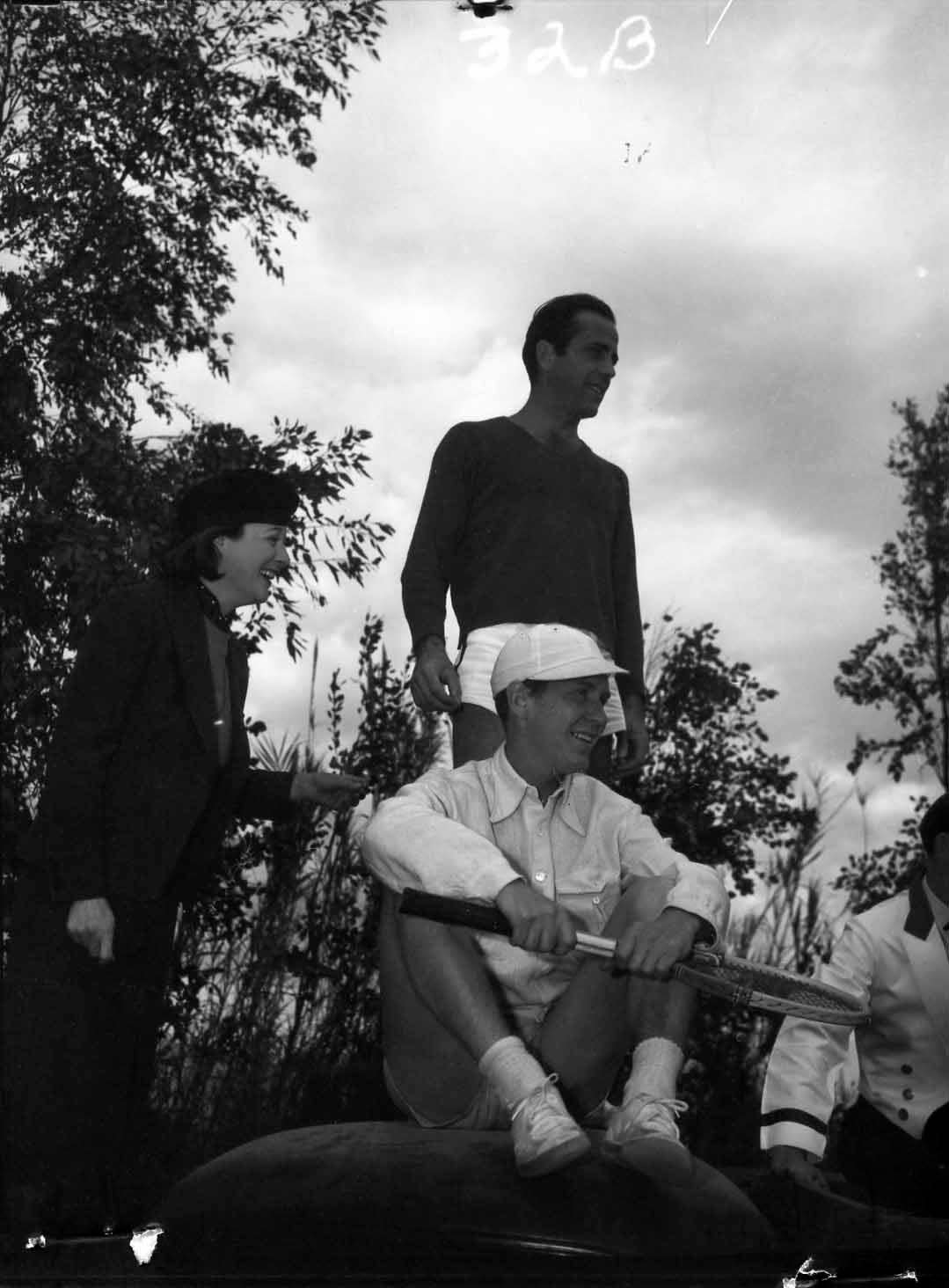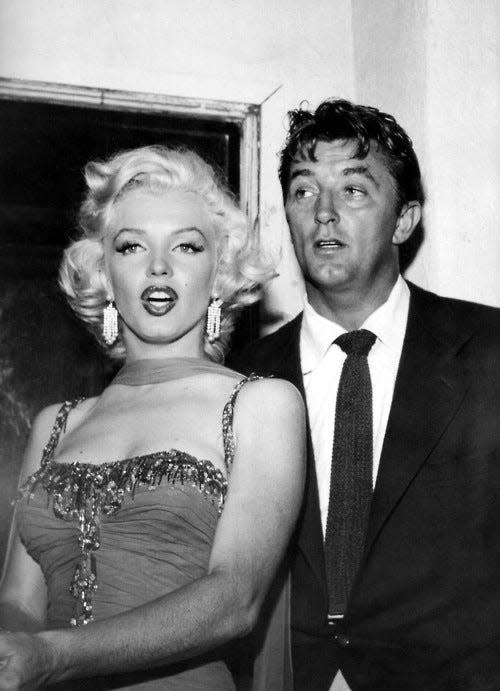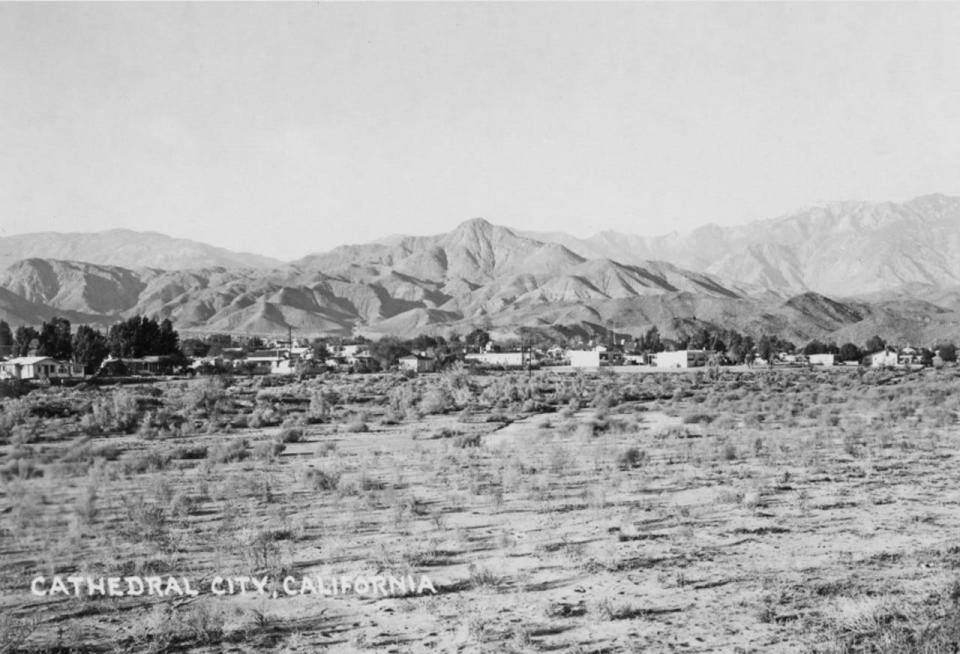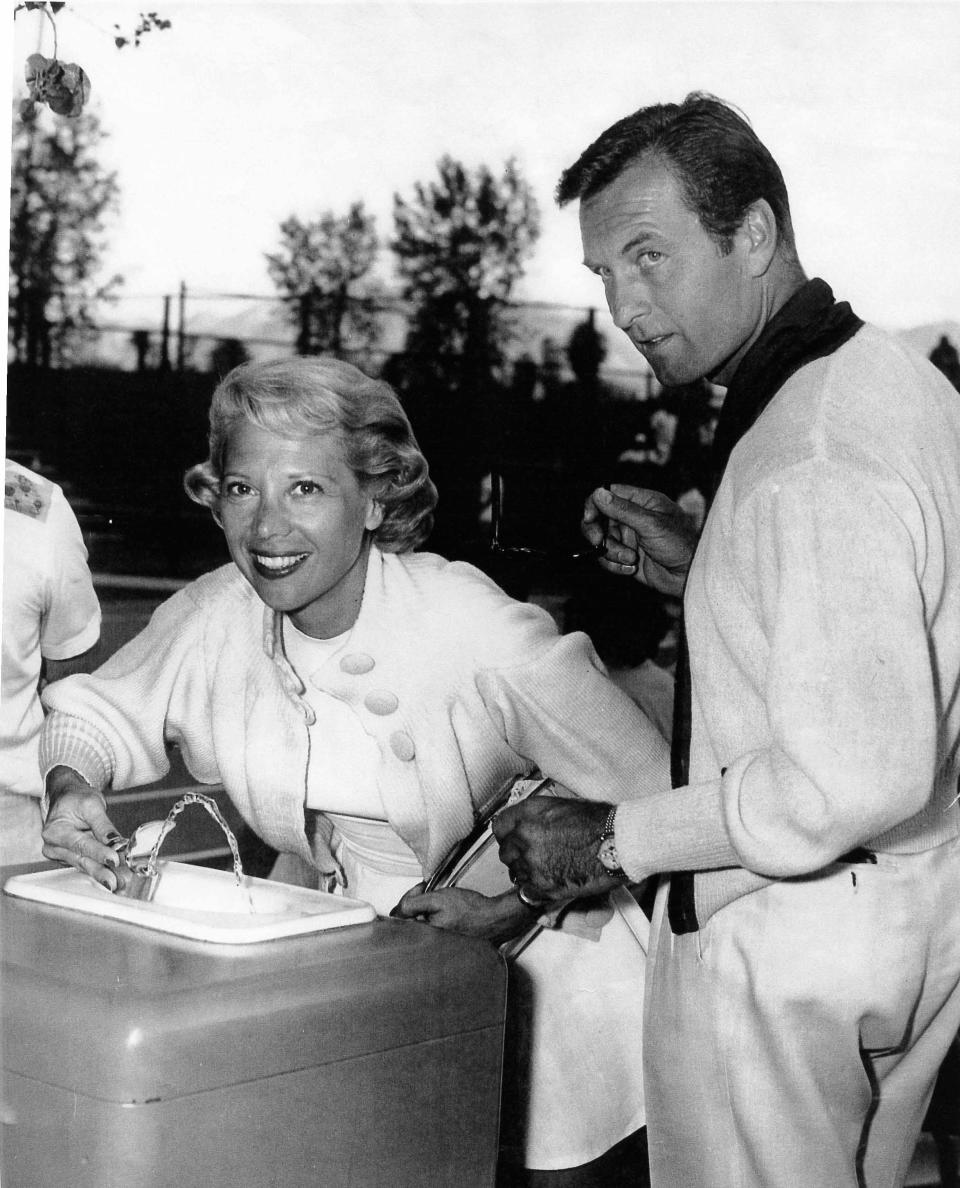History: Raymond Chandler's leading men followed his Marlowe character to Palm Springs

- Oops!Something went wrong.Please try again later.
- Oops!Something went wrong.Please try again later.
Clearly Raymond Chandler, the quintessential Los Angeles noir writer, had been to Palm Springs. He knew every inch of Los Angeles and described it in perfect detail, making his name synonymous with the city. He brought those skills to the desert. He'd seen its pools and palaces, fancy people and hotels. But he'd also witnessed its unvarnished side and captured that in the first slim chapters of a possible new book in 1959. The book was rudely interrupted by Chandler's death.
Ed McBain, writing for the New York Times way back in 1989, noted Chandler was enormously uncomfortable in the real Palm Springs and quoted him as writing in 1958, "Poodle Springs, I call it, because every third elegant creature you see has at least one poodle." (Since then there has certainly been a proliferation of pooches of all kinds.)
Chandler's musings, just four brief chapters, were finished into a complete book by Robert B. Parker. Parker was a bona fide mystery writer himself.
McBain noted, "Indeed, it is impossible to think of any other writer in the world better qualified for the task. Not only had Robert Parker devoted part of his doctoral dissertation to Chandler, but he is himself the creator of the literate, witty and tremendously readable novels about Spenser, a private detective who has proved his staying power over the course of some 17 books and a long-running television series. That Mr. Parker pulls off the stunt is a tribute to his enormous skill. In fact, one of the true delights in 'Poodle Springs' is to watch this engaging writer as first he tests the impossible shackles fastened to his wrists and his ankles, then breaks free of them to charge exultantly down a road Chandler himself might have chosen in his prime."

The resulting book nonetheless proved somewhat disappointing to McBain and countless other readers. He notes Marlowe "cracks wise less humorously and with obvious strain, protests too loudly and unconvincingly about having married rich and seems overly impressed by his own fame as a P.I. This is not the Marlowe we know and love."
McBain liked the later chapters better. "At his very best, Mr. Parker sounds more like Chandler than Chandler himself — but with an edge the master had begun to lose in the waning days of his life. Here he is describing Marlowe's favorite mixed drink: 'I sipped some of the gimlet. It was clean and cold and slid down through the desert parch like a fresh rain.'"
Parker captured Chandler's ethos: "The rain washes away the dust and glazes the cheapness and poverty and pretense, and freshens the trees and the flowers and grass that the sun has blasted."
It makes some sense that Chandler would have had Marlowe come to the desert. The desert was tailor-made for him. The shiny veneer of high society easily co-existed with gangsters, gambling and the struggle to survive, just like he did. Chandler's somewhat derogatory view of Palm Springs isn't that surprising. He saw the seamy underbelly of Hollywood firsthand, and its transplantation to the desert couldn't wash that away.
Kayleena Pierce-Bohen, writing about Liam Neeson, the latest Hollywood incarnation of Marlowe in 2023, noted, "Chandler's Philip Marlowe is considered one of the most well-known antiheroes in crime fiction, beginning with the hard-boiled variety that rose to prominence in the '20s. Characteristic of protagonists in the genre, Marlowe is an honest gumshoe operating in a corrupt world, often seen as naive and chaste by those around him but a dogged pursuer of the truth no matter the personal cost."

Pierce-Bohen continues, "Marlowe's working-class integrity, and his desire to get to the bottom of a case to earn an honest living as much as to satiate his own curiosity …" is the essence of the character, and "while Marlowe can always take a licking from any hired thug, the scars on his soul are the reminder of the cost of doing business with a morally bankrupt world full of femme fatales and corrupt policemen. …"
The embodiment of the good guy gumshoe was played by many actors; Neeson is just the latest. Humphrey Bogart in "The Big Sleep" in 1946, unbelievably, wasn't the first. He was preceded by Dick Powell in 1944 in "Murder, My Sweet." Robert Montgomery portrayed the sleuth in 1947 in "Lady in the Lake." James Garner gave it a try in 1969 in "Marlowe." An unlikely Elliott Gould tried to play it cool in "The Long Goodbye" in 1973. Robert Mitchum owns the reprised role in "Farwell My Lovely" and "The Big Sleep" in the 1970s. A more exhaustive list also includes James Caan, Powers Booth and George Montgomery.
Montgomery does an admirable job in 1947's "The Brasher Dubloon," a remake of the UK version of Chandler's "The High Window." The opening lines of the film are narrated by Marlowe: "I was sore at myself for coming all the way out to Pasadena on a day like that just to see about a case. And how I hate summer winds. They come in suddenly off the Mojave Desert and you can taste sand for a week."
Chandler's description of Bunker Hill in Los Angeles could have easily applied to the desert: "It used to be the choice place to live but nowadays they live there because they haven't got any choice."
Chandler, and a remarkable number of the leading men who played his famous character, also came to the desert just like Marlowe does in "Poodle Springs." They would find gambling, gangsters, fancy hotels, palatial houses and not a few poodles. Some, like Montgomery, would spend the rest of their lives here.

In the book, Chandler has Marlowe uncomfortably retiring to Poodle Springs, married to a proper poodle-parading millionairess, but wanting to continue to work.
Like Marlowe, Chandler himself continued to work. It's easy to recognize current day Palm Springs in the pages of his last few scribbles. So thinly veiled is "Poodle Springs" that Chandler doesn't bother to change the street names. He likely never intended it to be a book, abandoning it in boredom or frustration.
Richard Woodward writing in The Guardian noted, "Toward the end of his life, Chandler wrote in a letter to a friend that 'Los Angeles is no longer my city and La Jolla is nothing but a climate and a lot of meaningless chi-chi.' He had once boasted that he was the first to write about southern California in a realistic way. 'Now half the writers in the country piddle about in the smog. To write about a place you have to love it or hate it or do both by turns, which is usually how you love a woman. But a sense of vacuity and boredom — that's fatal.'"
It's hard to know if Chandler loved or hated the desert. He certainly captured some of its character in those first few pages. He didn't get a chance to retire to the desert like all the movie stars who played his character Marlowe. But he had been a winter resident in Cathedral City in the early 1940s and worked as an airplane spotter for the Ground Observer Post during the second world war.
As late as 1958 he was in the desert at Huddle Springs restaurant celebrating New Year's Eve. He died in La Jolla just a little over a year later in 1959. He was only 70 years old.
In "The Big Sleep," Chandler writes, "What did it matter where you lay once you were dead? In a dirty sump or in a marble tower on top of a high hill. You were dead, you were sleeping the big sleep, you were not bothered by things like that … You just sleep the big sleep, not caring about the nastiness of how you died or where you fell. Me, I was part of the nastiness now." The last of his writing in "Poodle Springs" describes that nastiness then.
Tracy Conrad is president of the Palm Springs Historical Society. The Thanks for the Memories column appears Sundays in The Desert Sun. Write to her at pshstracy@gmail.com.
This article originally appeared on Palm Springs Desert Sun: History: Leading men followed Chandler's Marlowe to Palm Springs

